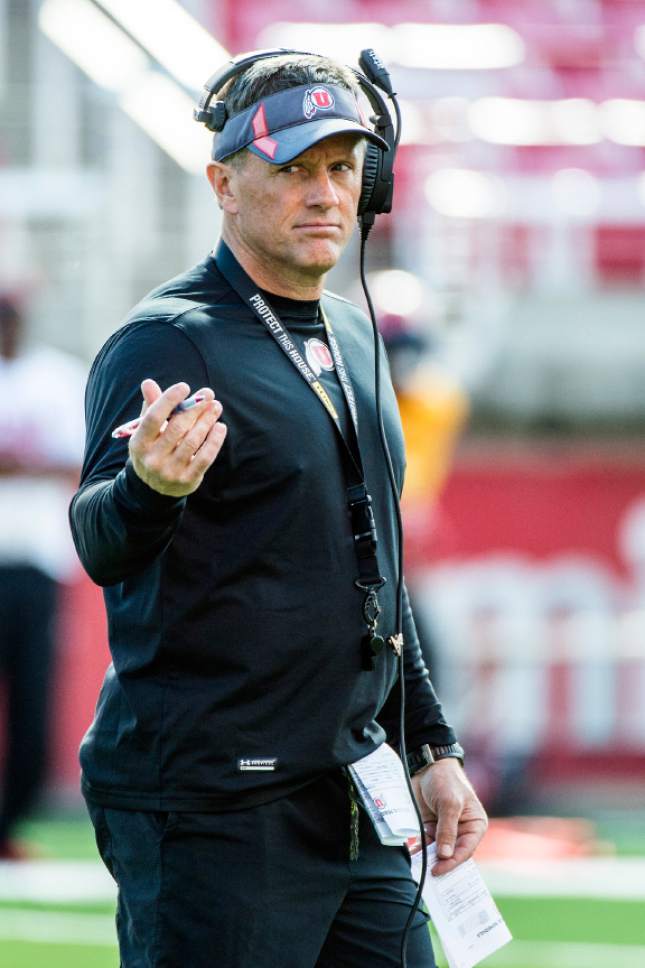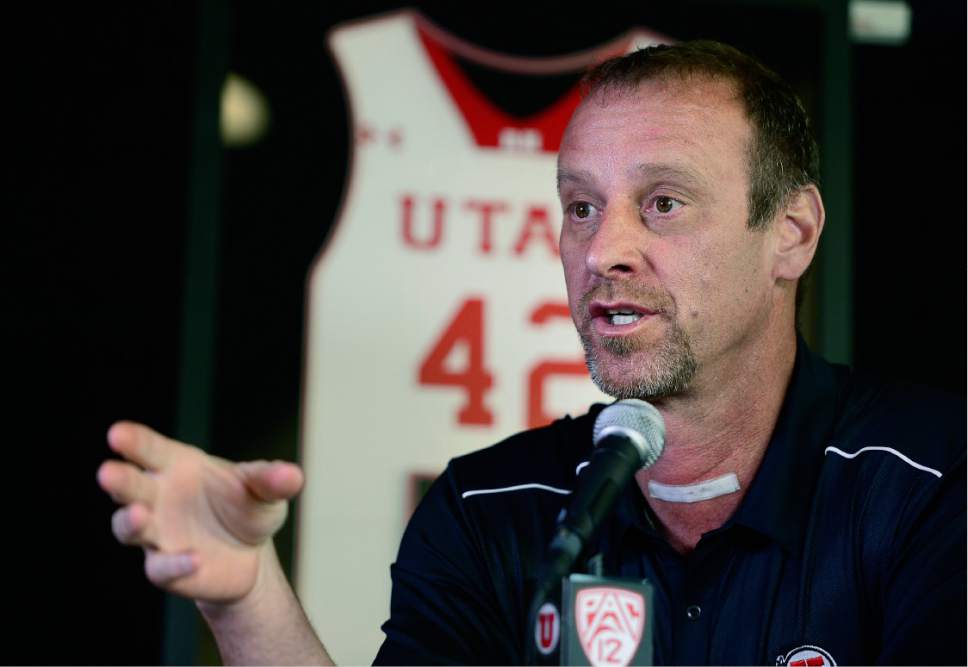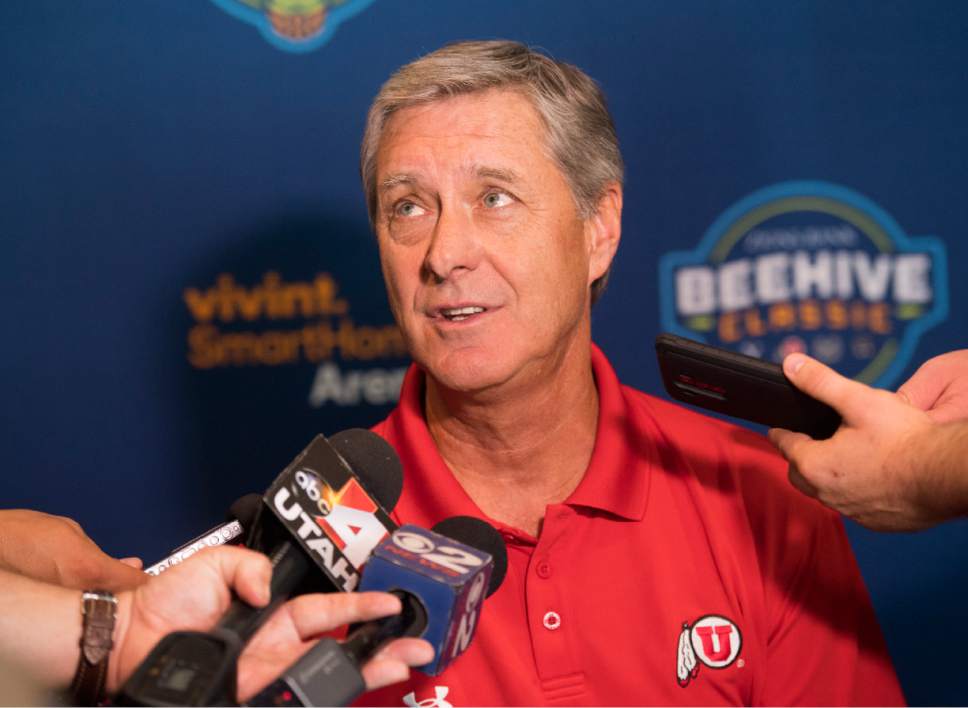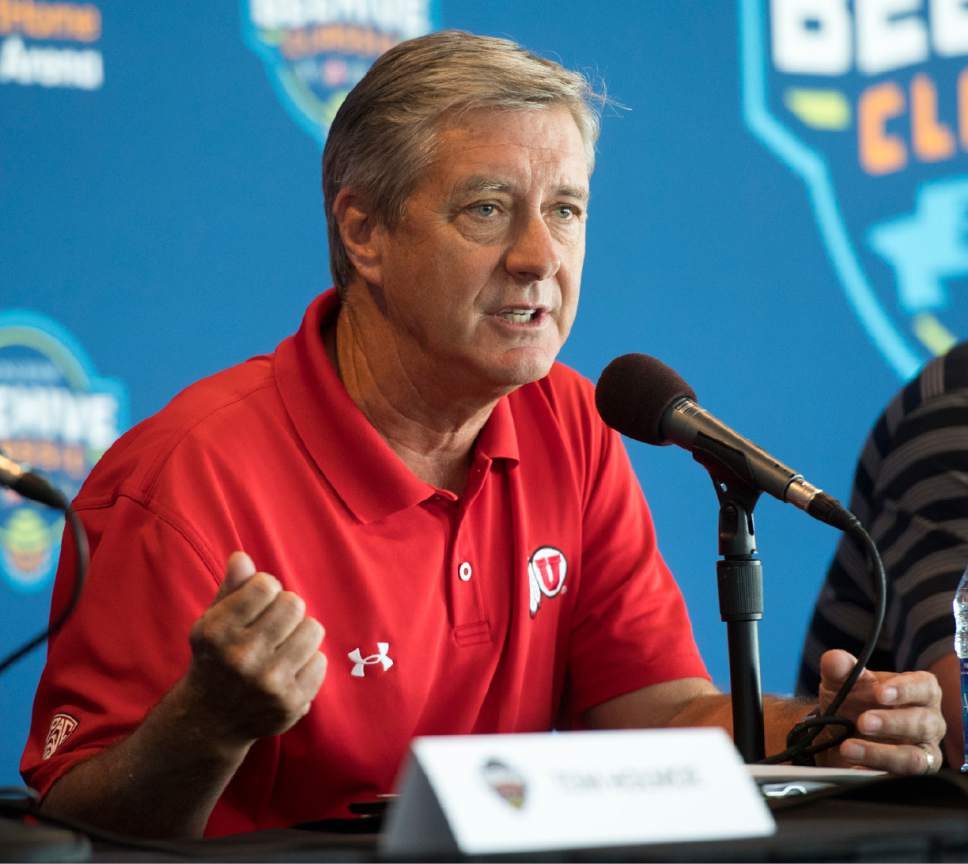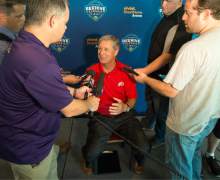This is an archived article that was published on sltrib.com in 2016, and information in the article may be outdated. It is provided only for personal research purposes and may not be reprinted.
Even as the Utes were preparing to celebrate their entry into the Pac-12 on the steps of the State Capitol Building, then-acting chief financial officer Steve Smith was taking deep breaths while looking at spreadsheets.
It was true that joining the league would bring windfalls, in television money, exposure and ticket sales. But moving up to a bigger league means bigger costs — and his job was to navigate the heady, unpredictable waters of growing Utah's budget against a higher caliber field of athletic programs.
"We had zero intention to compete at a mediocre level," he said. "We told our donors, 'We want to compete in the top third of the conference, but we need everyone to step up to get there.' So it's been interesting to see that return on investment."
Five years since joining the Pac-12, Utah's budget has grown from $29.7 million in the last year of the Mountain West to $72.2 million planned for next year. While that growth chiefly reflects the larger payout for Tier 1 television rights and Pac-12 distributions ($29 million in revenue for 2017 fiscal year), donations have doubled ($10.8 million), and football and basketball ticket sales revenue is up ($13.1 million).
The desired return on investment — winning — has worked out as well, as men's football and men's basketball were both ranked in the top 25 last year, and softball and baseball enjoyed returns to their respective NCAA Tournaments.
But Smith, now the department's permanent CFO, doesn't feel he's conquered anything. Rising costs and developments make competing financially in the Pac-12 a perpetual uphill challenge for the school with the 11th-largest budget in the conference, according to USA Today's most recent figures.
The biggest cost the Utes, and every major college athletics department, have struggled to keep a lid on is coaching salaries, which has exploded from $5.2 million in 2011 to $14.6 million in 2017. Football coach Kyle Whittingham (the state's highest-paid public employee) and men's basketball coach Larry Krystkowiak will make an estimated $5.8 million of that themselves next year.
Utah athletic director Chris Hill calls it a "sore spot on campuses all over the country," but said the arms race market for coaches has made skyrocketing salaries a grim necessity.
"Everybody will say that's hard to swallow as you look at some of the other jobs around the world, but it's the way it is," he said. "We have to do that to be competitive."
Another sore point may be that department salaries are increasing at a higher rate over the last five years ($26.7 million) than investment in athlete tuition, stipends, food and insurance ($9.9 million).
The department itself has grown from roughly 130 employees in 2011 to 162 now, Smith said. He's quick to point out that much of their staffing cost increases have gone to adding personnel that directly benefit athletes: trainers, strength coaches, nutritionists and academic support staff.
"You have to retain good people, because they have the most influence on success," Smith said. "Market driven rates are hard to control, but we look at merit and people who have shown that we need to keep them."
One thing the Utes have now that they didn't have then: significant debt.
The Utes have $5.5 million budgeted next year to help pay off the recently built football facility (expected to be paid off in 2032), basketball facility (2040) and scoreboard (2026), as well as money the department borrowed from the university at the outset of the Pac-12 era.
On the flip side, Smith notes, the department has facilities that are highly competitive against the rest of the conference and have helped improve recruiting, which improves on-field performance — which helps generate sales and donations to pay down debt. Since becoming a full-share member of the Pac-12, the Utes have also built back their strategic reserves.
In the Pac-12 era, Smith says the slow growth of Pac-12 Network revenue has been perhaps the biggest disappointment. Other NCAA changes, such as being able to provide cost of attendance stipends and (starting this year) fly recruits' parents for official visits, have added once unforeseen expenses.
Utah's high season ticket renewal rate (98 percent or better every year, according to Smith) has helped them stay consistent, even as other programs such as Washington report significant losses in recent years.
Utah could gain additional revenue when it negotiates new apparel and multimedia rights contracts, holdovers from the Mountain West era that expire next year. But overall, the Utes have made peace with being able to do as much or more on the field with less in the budget than their peers.
"You plan for the worst case scenario when it comes to expenses, and you hope for the best when it comes to revenue," Smith said. "It can be challenging, but it's still an exciting time."
Aaron Falk assisted with reporting.
Twitter: @kylegoon —
Utah's 2017 fiscal year budget
The Utes athletic department provided the Tribune with the budget for the upcoming fiscal year. Some key numbers to know from the estimated $72.2 million budget (some figures have been rounded, and some items have been combined for brevity):
Expenses ($72.2 million)
Account totals (travel, recruiting, uniforms, game day ops) • $23.1 million
Pac-12 expenses • $4.6 million
Debt service/capital projects • $5.6 million
Tuition/room and board/insurance • $8.6 million
Salaries • $26.8 million
Stadium rental/game guarantees/ reserves • $3.5 million
Revenue ($72.4 million)
Student fees • $6.0 million
University support • $1.8 million
Ticket sales • $13.8 million
Donations • $10.8 million
Multimedia rights • $3.0 million
National TV rights • $20.8 million
Pac-12 distribution • $8.2 million
NCAA distribution • $3.0 million
Sponsors/suites/away games/other • $5.0 million


